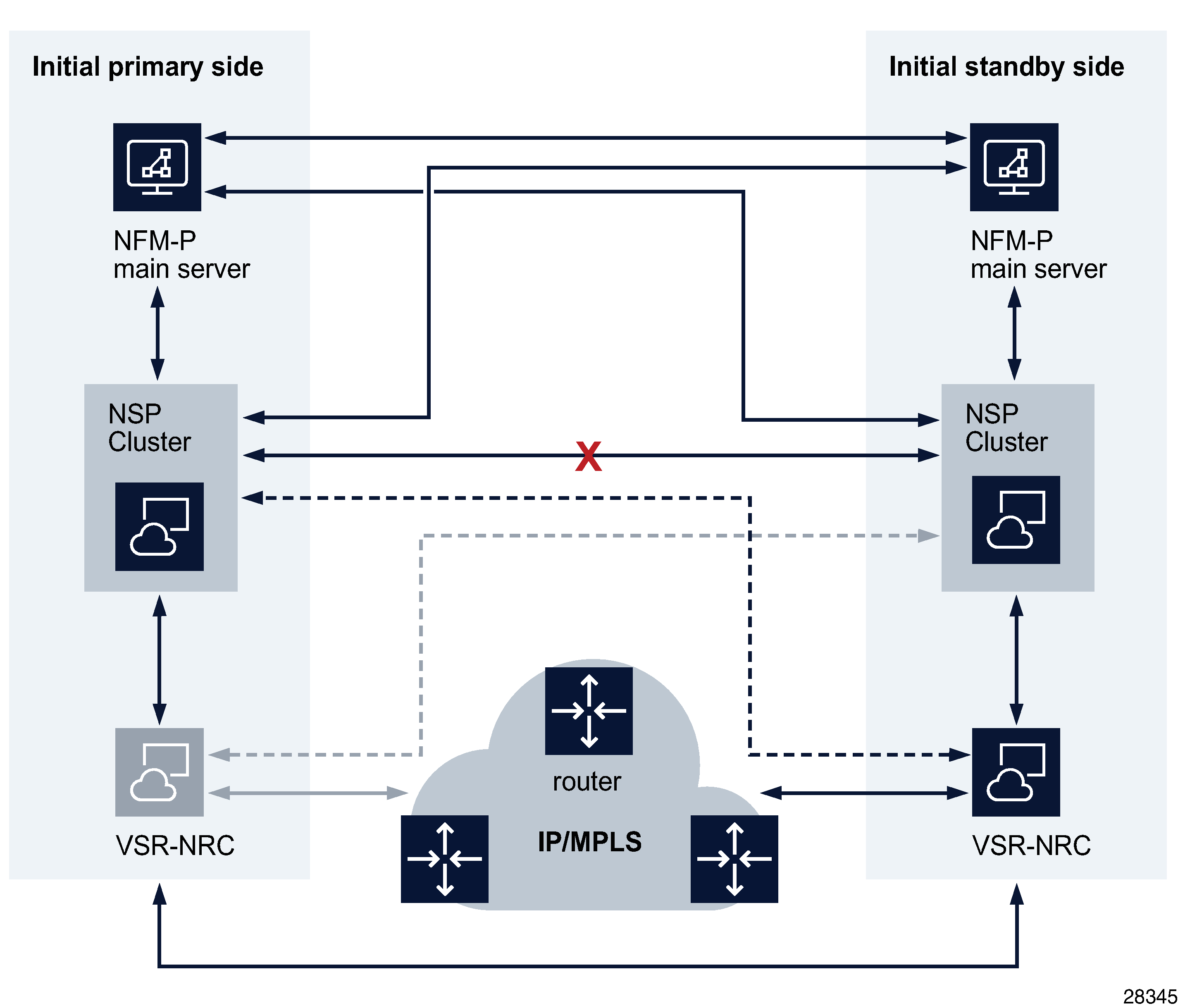VSR-NRC fault tolerance
Overview
The NSP supports single-site and dual-site deployments of redundant VSR-NRCs.
Single-site VSR-NRC deployment
The primary VSR-NRC communicates with the NSP cluster. If the primary VSR-NRC is unavailable, the NSP cluster initiates communication with the VSR-NRC in the same data center.
Figure 8-4: Primary VSR-NRC failure in single-site deployment
Dual-site VSR-NRC deployment
The primary VSR-NRC communicates with the primary NSP cluster. If the primary VSR-NRC is unavailable, the primary NSP cluster initiates communication with the standby VSR-NRC at the standby site.
Figure 8-5: Primary VSR-NRC failure in a dual-site deployment
The two VSR-NRCs synchronize their databases to allow for faster synchronization after a VSR-NRC failure.
TE-DB and LSP-DB synchronization
Full synchronization with the TE-DB and LSP-DB occurs whenever connection to a primary VSR-NRC is successful. In other words, if the primary VSR-NRC becomes unavailable and the primary NSP cluster begins to communicate with the standby VSR-NRC, the standby VSR-NRC is promoted to primary, and full synchronization with the TE-DB and LSP-DB subsequently occurs.
PCC client communication
PCC clients can define primary and secondary VSR-NRC IP addresses, which enables the PCCs to maintain communication without reconfiguration when the primary VSR-NRC becomes unavailable.

